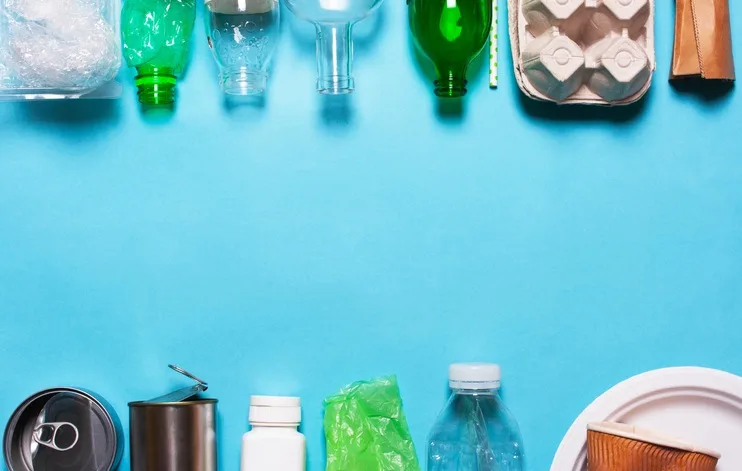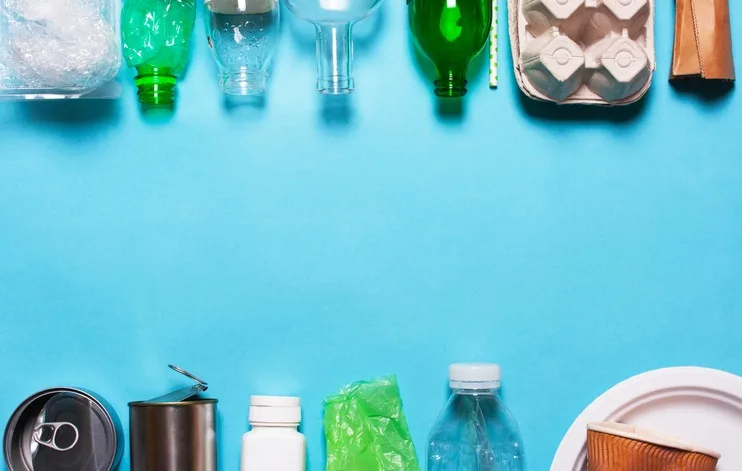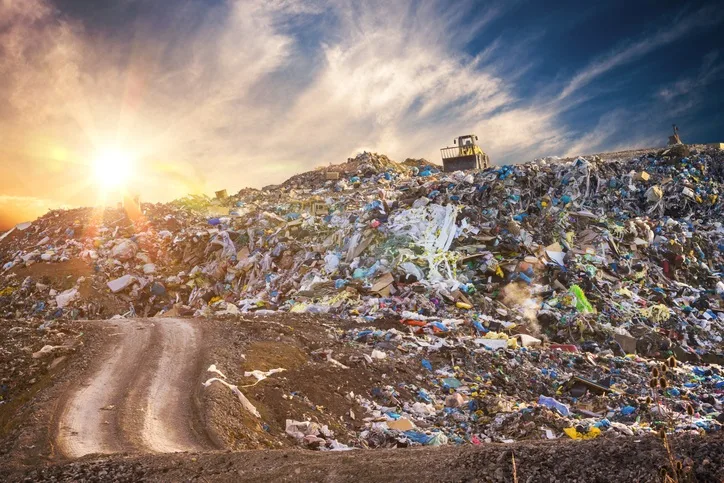
Are you an 'aspirational recycler'? See if you're using the blue bin correctly
Wanting something to be recyclable doesn't make it so.
Black plastic takeout container? Throw it in the blue bin. Coffee cup? Ditto. Plastic bags? Recyclable.
Or are they?
Most of us are guilty of throwing items into our blue bins indiscriminately, without checking to see if the items are, in fact, recyclable.
The phenomenon is called 'aspirational recycling', defined by the NY Times as throwing things into the blue bin based on the hope that they are recyclable.
Unfortunately, this does more harm than good, because adding non-recyclables to the blue bin can contaminate an entire batch.
That means waste managers are less likely to find buyers for the waste and increases the possibility that the entire contaminated load will be sent to the landfill instead.

All items thrown into a recycling bin should be thoroughly cleaned. File photo: Getty Images.
SEVEN NON-RECYCLABLE ITEMS THAT OFTEN END UP IN THE BLUE BIN
Recycling capabilities are different for each municipality. If you aren't sure about an item, it's best to contact your local recycling plant.
But according to Shannon Lavalley, a project manager for the Recycling Council of Ontario, some of the most common items that are recycled 'aspirationally' in Ontario include:
Black plastic, which cannot be identified and sorted by local facilities in Ontario.
Styrofoam, which can fall apart and contaminate batches. "In Vancouver, glass has its own bin, plastic bags and styrofoams can be returned to depots, but single steam programs such as Edmonton and Toronto’s have higher rates of contamination due to the lack of sorting," Lavalley says.
Coffee cups. Coffee cups can't be recycled for a couple of reasons. For starters, many of the cups that are tossed into the bin are contaminated by coffee and creamer. Second, most coffee cups contain a thin plastic coating which helps keep drinks warm. Many facilities can't separate the plastic from the cardboard, making them difficult to recycle.
Plastic bags.
Stand-up pouches, chip bags, or anything with food waste in it.
Batteries and appliances, which usually have designated drop-off depots.
Textiles and old toys.
"People just don’t always know where to put things, fortunately, many municipal websites have detailed breakdowns of acceptable items and where to put other commonly disposed of materials," Lavalley says.
VIDEO: NO, YOU CAN'T RECYCLE DIRTY DIAPERS
OTHER COSTS OF ASPIRATIONAL RECYCLING
"Aside from adding bulk to our ever-shrinking landfills, non-recyclable items placed into blue bins are essentially sorted and paid for twice," Lavalley says.
"There are processing expenses associated with this, where they end up at a recycling facility only to be sorted as trash, sent to a trash facility and placed in landfills. Bales of recyclable materials are often shipped around the world to places like China, up until recently, only to be turned away for high levels of contamination. This transport alone carries a heavy carbon footprint, and often leads to more pollution as materials may be lost at sea."
Lavalley says minor mistakes by residents can contaminate an entire batch of material that could have otherwise been recycled.
"Items such as plastic bags and wire hangers wrongly placed in the blue bin may also damage recycling equipment or pose a danger to facility employees," she adds.
In an interview with the CBC, Jim McKay, general manager of solid waste management for the City of Toronto, estimated that every percentage-point decrease in contamination could lower Toronto’s recycling costs $600,000 - $1,00,000 annually.

Contaminated recycling batches can end up in the landfill. Courtesy: Getty Images.
WHAT CAN CONTAMINATE A PREVIOUSLY-RECYCLABLE ITEM?
Food, liquid, or oil can make a recyclable item no longer eligible for the blue bin.
Coffee-stained paper or cups should go in the trash, along with peanut butter or yogurt containers that still contain food products.
"The best way to give your recyclables a chance at being recycled and reduce the likelihood of them ending up in landfills is to empty and rinse containers reduces before placing them in the bin," Lavalley says.
OTHER HARD NOS
Medical waste -- like blood bags and syringes -- as well as batteries and organic waste like dead animals aren't recyclable and can cause significant delays at processing plants because they force facilities to shut down and sanitize.
CAUSE FOR CONFUSION
If you've been unknowingly throwing the wrong items into your blue bin, it's not all your fault.
Contrary to popular belief, not all plastics are recyclable -- and the types of plastics that are recyclable vary from community to community, according to the Canadian Plastics Industry Association (CPIA).
Manufacturers divide plastics into seven groups, with those labelled 1 and 2 the most widely recyclable.

"CPIA completes an annual “Access” study of about 400 recycling programs across Canada to find out exactly what plastics municipalities collect for recycling, and to learn about how best to support Canadian communities to recycle more," the CPIA says on its website.
"In the most recent study, we characterized 24 types of plastics containers and non-containers and found 70 per cent of Canadians have access to programs that accept most plastic packaging containers – HDPE, PET, LDPE, polystyrene, and PVC. More than this, 95 per cent can recycle PET bottles (like pop, water, and juice) plus HDPE (detergents, milk jugs, and other cleansers)."
But improper standards often render recyclable items unrecyclable, Lavalley says -- and this can become confusing, given that some municipalities have different standards.
"For example, Ontario does not have a provincial standard for accepted materials," she says.
"As it currently operates, each city/region has its own recycling rules, and what is accepted in one city might not be accepted in the neighbouring city. When non-recyclable material gets mixed in with recyclable material it can lead to contamination."
VIDEO: MAKE THE MOST OF YOUR BACKYARD USING RECYCLED ITEMS
TIPS TO BECOME A BETTER RECYCLER
One of the best ways to keep junk out of the landfill is to reduce your use of packaged or unrecyclable goods.
Here are some tips:
Reduce. "Try to source products that use less material, or less toxic material," Lavalley suggests.
Reuse. Instead of disposable items, try to use containers you have at home. "Travel mugs and reusable water bottles are both great examples of switching consumption," Lavalley says.
Recycle. This should be your last resort. Make sure all items placed in your blue bin are clean.
"When you do find yourself in a situation where you have a product to dispose of, it is quick and beneficial to take a moment and research if your municipality accepts it in curbside pickups," Lavalley says.
"Taking the time to rinse residues and foods out of containers will give them a greater chance of being recycled."






